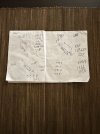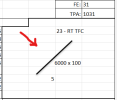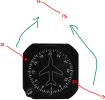tsts4
Pattern Altitude
And to piggyback at towered fields downwinds are a means to get from the departure side of the field to the arrival side. If you are already on the arrival side you'll most likely be told to enter a base or conduct a straight-in to the active runway. For example, this morning I flew into Orlando Exec and they were using 07. I was coming from the Southwest (Tampa) and was given a 10-mile straight in arrival. Side note -- As I was IFR I got to fly thru the Disney TFR at 2000 which was a first for me which as pretty cool seeing it all from the air.If you're at a towered airport, there is no 45 to enter downwind crap. That's for untowered fields. If they tell you to enter the downwind, they expect you to turn into the downwind in the most direct way possible.
Last edited:

 That would be like using a GPS to find your own driveway!
That would be like using a GPS to find your own driveway!




